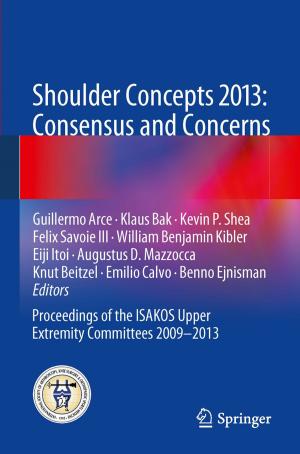Pathogenesis of Mycobacterium tuberculosis and its Interaction with the Host Organism
Nonfiction, Health & Well Being, Medical, Medical Science, Microbiology, Immunology| Author: | ISBN: | 9783642402326 | |
| Publisher: | Springer Berlin Heidelberg | Publication: | December 9, 2013 |
| Imprint: | Springer | Language: | English |
| Author: | |
| ISBN: | 9783642402326 |
| Publisher: | Springer Berlin Heidelberg |
| Publication: | December 9, 2013 |
| Imprint: | Springer |
| Language: | English |
Mycobacterium tuberculosis is one of the most notorious pathogens on earth, causing the death of approximately 1.5 million people annually. A major problem in the fight against tuberculosis is the emergence of strains that have acquired resistance to all available antibiotics. One key to the success of M. tuberculosis as a pathogen is its ability to circumvent host immune responses at different levels. This is not only a result of the special makeup of M. tuberculosis in terms of genetic diversity and DNA metabolism and its possession of specialized secretion systems, but also of its ability to hijack the host’s innate immune defence mechanisms.
In this volume, researchers from different disciplines provide a topical overview of the diverse mechanisms that contribute to the virulence of M. tuberculosis, ranging from their genetic, metabolic and molecular makeup, as well as the complex strategies these bacteria utilize to escape immune destruction within infected hosts.
Mycobacterium tuberculosis is one of the most notorious pathogens on earth, causing the death of approximately 1.5 million people annually. A major problem in the fight against tuberculosis is the emergence of strains that have acquired resistance to all available antibiotics. One key to the success of M. tuberculosis as a pathogen is its ability to circumvent host immune responses at different levels. This is not only a result of the special makeup of M. tuberculosis in terms of genetic diversity and DNA metabolism and its possession of specialized secretion systems, but also of its ability to hijack the host’s innate immune defence mechanisms.
In this volume, researchers from different disciplines provide a topical overview of the diverse mechanisms that contribute to the virulence of M. tuberculosis, ranging from their genetic, metabolic and molecular makeup, as well as the complex strategies these bacteria utilize to escape immune destruction within infected hosts.















